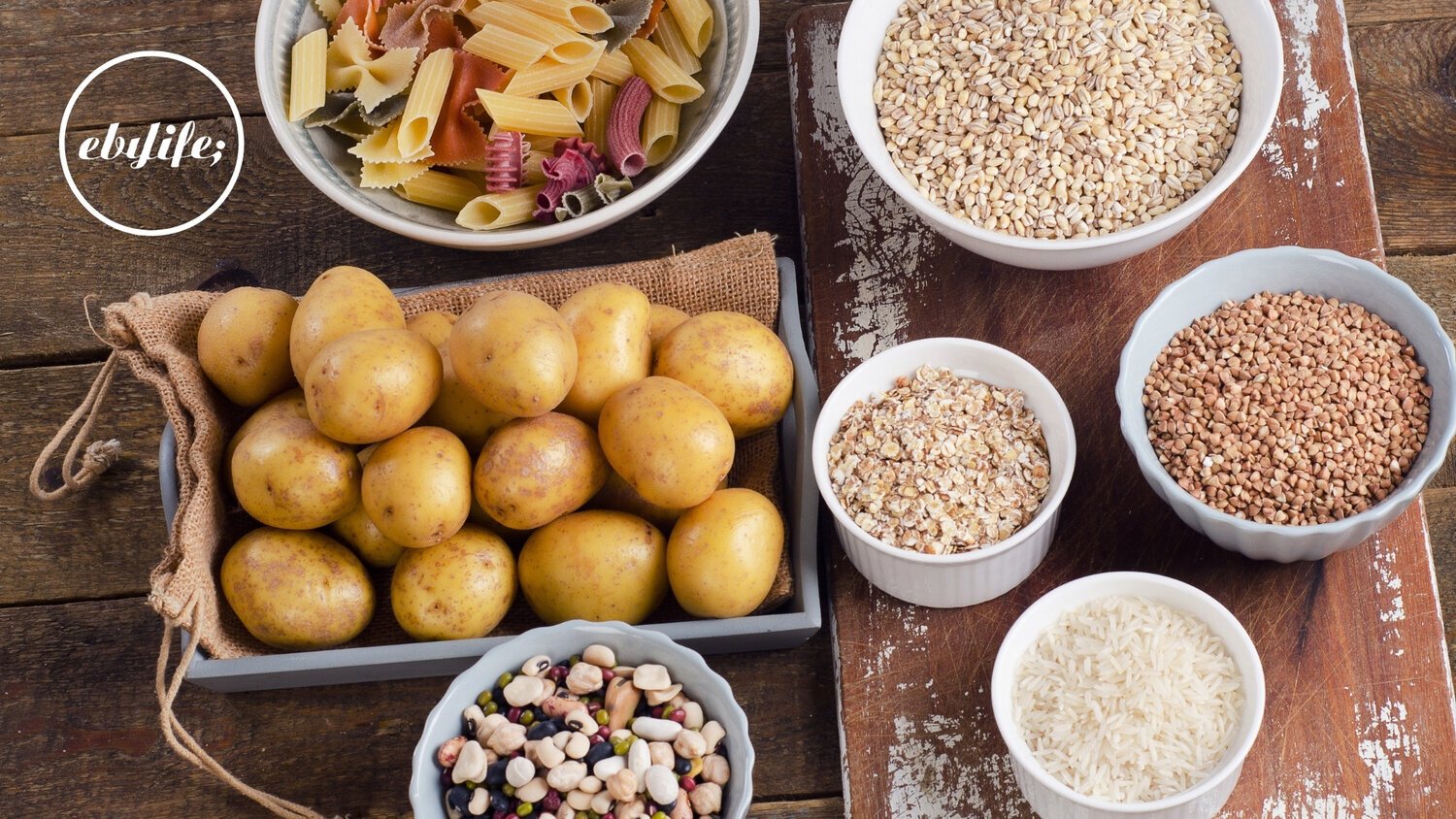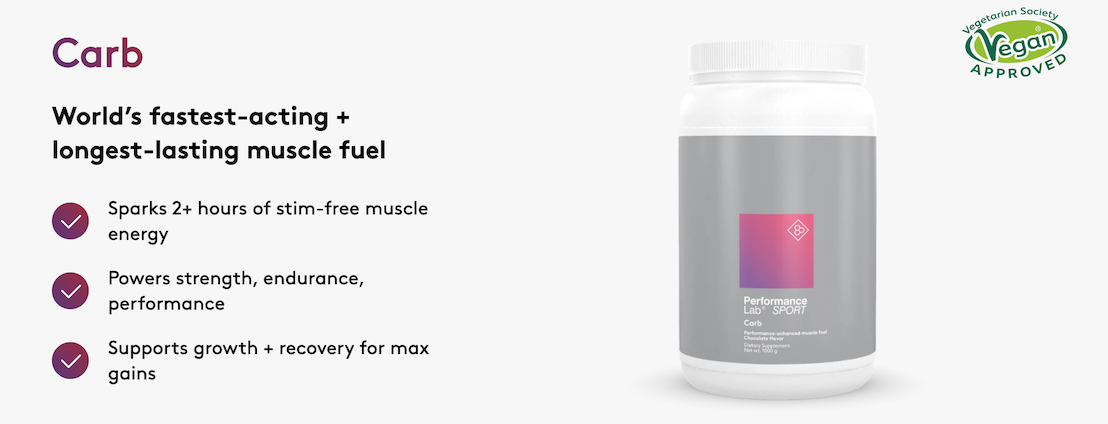Carb loading before a big race? Here’s how to do it!
Written by: Martin Ebner - Head PT and Founder of Ebylife
Carbohydrate loading might seem like the antithesis of what you want and feel like doing before a big race. After all, who could forget the infamous scene from The Office where Michael scarfed down an entire plate of fettuccine alfredo before starting his 5K? In short, there is a right way and a very wrong way to carb load before a race. If you’re looking for both a fast-start and a sustained boost of energy all the way to the finish line, carb-loading could be a great solution and the difference between crashing out early and finishing on the podium. Here’s how to do it the right way.
What is carb loading?
Carbohydrate-loading, also called carb-loading and carbo-loading is a fairly simple and easy-to-follow nutritional strategy to enhance your athletic and sporting performance during endurance events (90 + minutes) by increasing the amount of glycogen (the body’s preferred fuel source) stored in your muscles and liver.
Carbohydrate loading in the body occurs when you follow a carbohydrate-rich meal plan whilst simultaneously reducing the intensity, duration and frequency of your training in the days prior to the big event.
The Benefits of Carb Loading
Carbohydrates are one of the 3 macronutrients. They are the body’s most easily accessible and preferred fuel source. When we consume carbohydrates, the body breaks down and converts carbs into glucose which is used for our immediate energy needs. Anything extra or that is not used as energy is then stored as glycogen in the liver and muscles. Carb or carbo-loading works by increasing the amount of glycogen we can store so that we have more sustainable energy to fuel our efforts and performance during long-distance events.
The two other macronutrients are fat and protein. While both can also be used as energy, they are far less efficient and much harder for the body to break down for fuel. Only when we have fully depleted our carbohydrate and glycogen stores, do our bodies begin the process of converting fat and eventually protein to meet our energy requirements. While fat burning can produce desirable results aesthetically, it certainly shouldn’t be a priority when performance and endurance is the main goal. Make the mistake of not getting enough carbohydrates in the hour and days prior to your event and your results will more than likely suffer.
See related articles:
One particular study has shown that carb-loading may reduce muscle fatigue (the dreaded runner’s ‘wall’) and improve performance by 2–3% for exercise lasting more than 90 minutes. As marathoners and endurance athletes know, a 2-3% improvement is much bigger than it seems! Here are some of my top tips to do carb-loading the right way and how to overcome many of the common carb-loading conundrums.
Only carb-load for activities lasting 90 minutes or more
Carb loading isn’t effective for all forms of exercise. It is best utilized for high endurance sports such as long-distance running, cycling, triathlons, cross country skiing, and rowing. The study we mentioned above found that carb-loading has little to no effect for high-intensity exercise lasting less than 5 minutes, nor is there any benefit for moderate-intensity running or cycling lasting 60 to 90 minutes. The real benefits come during exercises lasting longer than 90 minutes. The same study found that increasing muscle glycogen levels can postpone fatigue by approximately 20% in endurance events lasting more than 90 minutes. It may also improve intense speed-based endurance performance in which a set distance is covered as quickly as possible, such as a marathon. In these cases, high-carb diets have been reported to improve performance by 2 to 3%. However, If you’re just looking for more energy for your regular morning run or gym workout, try a pre-workout supplement (and keep an eye on your macronutrient split) instead.
Count your macronutrients to find your ideal calorie and carb intake
There is such a thing as too much of a good thing! In general, it’s recommended that you consume 2.3–5.5 grams of carbohydrates per pound of body weight (5–12 grams per kg) per carb loading day. If you’re keen on counting your macros, you can also adjust your macronutrient split to reflect this change. Try this carb cycling calculator to find your carbo-loaded sweet spot!
Keep your diet colorful
It's tempting to want to fill your plate with colors of beige from bowls of pasta, slices of ciabatta, and mashed potatoes. No surprises here, but the quality of the carbs you’re putting in your body will make a huge difference in how your stomach and muscles feel mid-race. In the days leading up to your race, eat familiar foods like veggies, sweet potatoes, and other high-carb low-fat foods that you know won’t upset your stomach or kill your stamina.
See: How to Combat the Nutritional Decline of Fruits and Vegetables
Stock up on carbs for two or three days before the race, NOT the morning of
Slow and steady wins the race, right? For carb loading it certainly does! If you’re loading up on carbs all the way to the start line, your body won’t have enough time to digest them, leaving your stomach feeling bloated and full. Instead of “cramming” in your carbs excessively, eat the same amount of calories (or a bit more) than you normally would for 2 or 3 days leading up to your event but swap the majority of fats for carbs. Since you will likely be tapering your exercise in the days leading up to your event, it will give your body time to stock up on glycogen. Avoid going overboard the night before as this can negatively impact your sleep and result in you starting the race not only sleep-deprived but with undigested heavy food in your belly. Instead, eat earlier in the night so that your body has time to break it all down and store it effectively for the big event.
Avoid fiber-rich carbs
Normally I recommend eating lots of fiber-rich foods but If you eat too much fiber before race day you’ll likely have to divert from the finish line to the toilets. It’s not a pleasant thought, but it’s a real problem that many people encounter when they load up on the wrong carb-heavy foods too close to race-day. The day leading up to your event, opt for white bread or tortillas over wheat, white rice over brown, and bagels over whole-grain toast. You’ll also want to avoid dried fruits, cornmeal, seeds, and granola the day before your race to avoid any risk of stomach pains.
With all this carbohydrate intake, you might be worried about weight gain. In short, there’s no need to fret. While the number on your scale may increase slightly, this is mostly due to water weight; for every gram of glycogen, your body stores around 2.6 grams of water. This actually helps you to retain hydration during your event.
Endurance athletes know that long and even moderate distance events are no joke! After months or even years of training, carb-loading may be able to give your body the energy boost it needs to whittle down your numbers and improve your performance when you need it most. When done correctly, you’ll feel energized and lighter on your feet! Just remember the golden rule: fettuccine alfredo and marathons do not mix!
More articles you might enjoy
References:
National Library of medicine - Carbohydrate-loading and exercise performance by J A Hawley, E J Schabort, T D Noakes, S C Dennis



